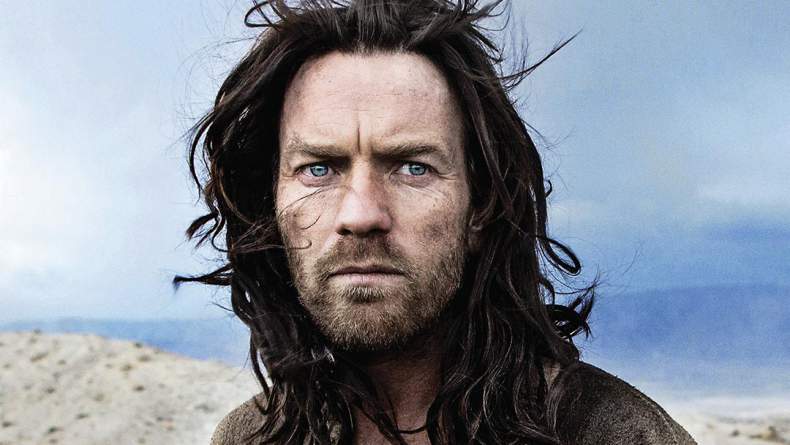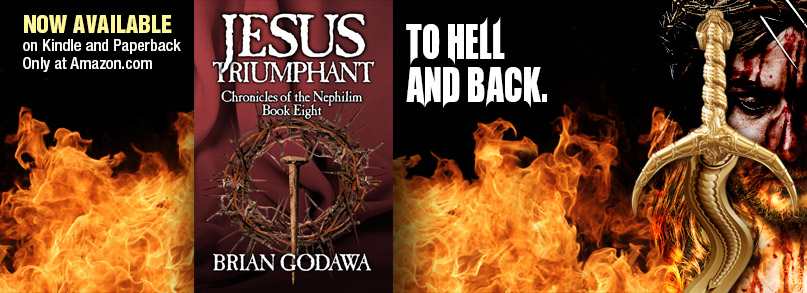
A fictional drama of Jesus during his 40-day fast in the desert. He meets a family with one male son and a sick dying wife, and makes a wager with the devil to try to help them through their family problems. Starring Ewan McGregor as Jesus and Ewan McGregor as Satan.
In my book Hollywood Worldviews I write about how the depictions of Jesus in movies throughout the decades often reflect the zeitgeist of the era. I wrote: “A survey of the portrayal of Jesus in the movies yields an interesting mixture of both historical and mythical, human and divine, sinner and saint. In fact, one might say that the history of Jesus in the movies is precisely a history of the theological struggle between Christ’s identity as God and his identity as man.”
A Jesus by any other name
In HW, I called the Jesuses of the movies by their social constructs as depicted in the films:
The Greatest Story Ever Told (1965): Leonardo-DaVinci’s-humanistic-Renaissance Jesus.
King of Kings (1961): Youthful-blue-eyed-Aryan-WASP-moviestar Jesus.
Jesus of Nazareth (1977): Hypnotic-eyed-possibly-drug-addict-Jesus-who-never-blinks.
Jesus Christ Superstar (1972): 70s-nonviolent-peace-demonstrator scapegoat-for-the-military-industrial-complex Rock n Roll Messiah.
The Last Temptation of Christ (1982): Confused-epileptic-temper-tantrum-sinner Jesus.
The Gospel of Matthew (1995): Smiley-faced-California-surfer-dude Jesus.
Jesus: The Epic Miniseries (2000): Politically-correct-lovey-dovey-pacifist-television Jesus.
Judas (TV 2004): Dr.-Phil-Scooby-Doo-Shaggy-Malibu Jesus.
Look, I realize how impossible it is to portray the God-man in any way that everyone will approve of. That ain’t gonna happen. (It would take a – a miracle! And then most people wouldn’t believe it anyway)
My definition of the Jesus of The Last Days in the Desert as being a “Boring-Arthouse-Existentialist Jesus” is certainly no disappointment with the very weighty performance of McGregor (The Satan part is addressed later). His acting was profound and very human. He really brought it with this portrayal of Jesus being tempted by the lust, the flesh, the eyes, and the pride of life without being a sinner. Fair enough. A Jesus who, like many holy men, fasts in order to draw close to the God he feels out of touch with. A Jesus who wrestles with existentialist issues of presence and purpose, most akin to the Gethsemane scene of the dual natures in conflict.
Or is it?
The director, Rodrigo Garcia, who claims to not be a Christian, said that he could only understand Jesus’ human side. He questioned how could one portray the divine side anyway? Again, fair enough. At least he didn’t try to subvert Jesus into his opposite like the most recent abominable Noah and Exodus movies do with God and their human heroes.
Or did he?
Listen, every artist interprets through their worldview grid. It’s not a conspiracy, it’s just reality. And since Garcia is admittedly humanistic, it does not surprise me that his “Jesus” comes off more humanistic than Biblical. I wrote about how the Jesus of The Young Messiah had transformed over the movie’s development away from the Roman Catholic Apocryphal Jesus to a more Biblical New Testament Jesus because of the corresponding transformation of the director’s own spiritual growth toward Christianity.
Could it be… Satan?
In Last Days, Garcia makes the interesting creative choice to depict Satan as a mirror image of Jesus (with a few added ornaments of jewelry for vanity). Is this done merely as a clever ruse by Satan to confuse the Messiah and to assert a kind of spiritual identity politics or irony? Maybe.
Or it may be an expression of Garcia’s own humanism to suppose that as a human, Jesus had the same composite nature of dark side and light side within himself as do we all (An Obi Wan Kenobi Jesus). In this interpretation, (not that different from the sinful madman Jesus of the Last Temptation, that Garcia says he loved) Satan becomes a projection of Jesus’ own “dark side” that he must overcome through the power of his free will – as do we all. Jesus becomes a humanistic role model of works righteousness, an exemplar, not a savior.
Or is this pushing it too far? Church Lady allusions notwithstanding, am I just another Christian critic who is never satisfied with any depiction of Jesus onscreen? Nope. I loved the Passion of the Christ, Risen, and The Young Messiah, all imperfect portrayals, but full of that heart and soul, humanity and divinity.
And a Jesus who resurrects (or at least will resurrect).
The Jesus of Last Days is killed by the spear piercing on the cross (rather than after death), then he is buried in a cave. And of course, he does NOT resurrect. He stays dead in that tomb.
Yep, humanistic holy-man Jesus, not godly Messiah.
This is fast becoming a tagline for me: I see this crap so you don’t have to.
SPOILER ALERT: (But go ahead and read it cause you don’t want to see this movie anyway)
And I think the meaning goes further when understood in context with the family he stumbles upon in the desert. The father is a mean strict man who wants his son to follow in his footsteps and live out in the desert. The son doesn’t want to. He wants to live in Jerusalem with a different trade. And of course, his dying mother supports the kid. The father dies in an accident, and the mother burns the father’s body in a decidedly non-Hebraic funeral pyre, which is a metaphor of total freedom that allows the kid to achieve his own dreams.
Other than this, there is no real plot. It’s quite boring. Satan makes a wager with Jesus that if Jesus helps the family to all their satisfaction, then Satan will stop hounding Jesus. Okay, that appeared for a moment to be the semblance of a plot. But then it really never happens, we forget about it, and later Jesus says, “I never made the wager.” And it’s never really addressed after that, as failure or success. Satan in this story is really just a nagging sarcastic cynic who likes to insult people and God. He’s a very boring villain. There comes a point where ambiguity and lack of clarity is no longer thoughtful creative nuance and becomes just pretentious confusion and poor storytelling.
As a professional storyteller and screenwriter, I can tell you that B-stories or subplots are not arbitrary (A-stories are the main story of the protagonist). In a good story, the minor plots reflect the hero’s journey from a different perspective.
So, if Garcia is NOT doing that here, he is not a good storyteller.
But if he is doing good storytelling, then the situation is much worse, because the need to release one’s self from one’s father, burn his “dead body” to free yourself with permanence, and do it your way becomes the metaphor for Christ’s own journey with his heavenly Father (He seeks the approval of his Father but is left alone). Jesus finds his answer in the young lad’s solution. The one story is a reflection of the other.
That becomes the same old serpentine temptation from the Garden disguised as growth in wisdom and maturity. The most primal expression of the Gnostic narrative.
That makes the God of this story the real Satan.
And that would make it evil.
(Okay, so maybe this is as bad as Noah and Exodus).
Try this Jesus instead…
Jesus Triumphant. Theological action adventure hero Jesus. But Biblical. You will never see the Savior the same way again. You will see him better.


4 comments on “Last Days in the Desert: Boring Arthouse Existentialist Satan Jesus”
Thank you so much for doing this review my father asked you about it earlier in the week. I love your books, they are amazing and tell a great story. Right now I am listening to the audio book version of the Dragon king book. It is really good, and once again I thank you for your work.
Thanks, Peter. I aim to please. AND cause some trouble 🙂
Good column, Brian. By the way, in regards to you appearing on my Confronting the Devil podcast… we now have a Roku Channel that features our 15 podcasts so far, and in the #1 spot for most plays is your interview episode!
That’s great to hear, Kevin!
Comments are closed.